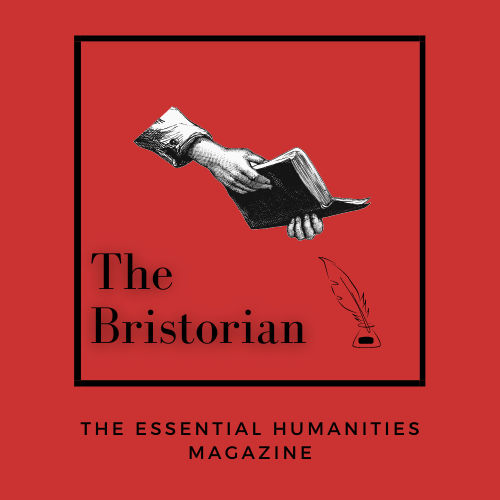The Rise and Fall of Films and Filming Magazine: An Oasis of Male Homosexuality under Criminalisation
By Gaby Turner
“Some things are more precious because they don’t last long.”
Situated between highbrow publications trashier titles, Hansom Books’ Films and Filming magazine, active from 1954-1980, found its success as the most widely circulated film magazine of its time. It attracted critics of great status such as Raymond Durgnat. At first glance, Films and Filming was a magazine for cinema lovers. In many ways, it was.
Yet, to many gay men in Britain and abroad, it was so much more than a film lovers’ publication. Hidden in plain sight was a world of male homosexual agency in the period before decriminalisation, going entirely unnoticed by most of its readers. This duality was the crux upon which Films and Filming’s existence rested. It was not just a magazine which represented the interests of gay men, but one which they could openly read – even (as the magazines final editor Robin Bean proudly proclaimed) on the Tube.
It is important to consider the queer British context in which Films and Filming was born. Aggressive policing in the 1950s meant that there were over 1000 men in British prisons for homosexuality. The 50s had seen high profile cases, such as the 1952 arrest of Allan Turing and the Montagu case in 1953.
Yet, 1954 was also a breakthrough moment for those who had been pushing for gay rights. Giving in to public pressure, the Government commissioned the Wolfenden Report, investigating the legal boundaries of homosexual behaviour. Whilst the report clung to language of immorality, and its motion for partial decriminalisation was defeated in 1960, it was a sign that change would come.
Enter Phillip Dosse.
In 1950, Dosse started Hansom Books. Interviews with those who worked there evoke an oasis of gay subculture. Being attractive, homosexual, and male was, they joke, the unspoken hiring criteria. It is not surprising that this atmosphere nurtured Films and Filming: a safe space created by gay men, for gay men.
The low price of Films and Filming (only 2 shillings in the 1950s) and its ready availability in newsagents around the country created a somewhat furtive network of homosexual solidarity. From its first issue, the magazine gave visibility to homosexual desire. Adverts for ‘notoriously queer’ businesses such as fashion store ‘Vince Man’s Shop’ flaunted the male physique.
In keeping with its status as a film-oriented publication, the magazine never missed a chance to feature an actor who was widely speculated to be gay, like Rock Hudson, or to print an abundance of homoerotic film stills and behind the scenes pictures.
(Films and Filming, 1968)
Most significant to many readers were the final pages of the magazine. These contained strategically worded personal adverts, to be decoded by those in the know. The evolution of the language of homosexuality means that whilst today we may find an advert for a ‘gay Batchelor’ comically transparent, at the time the use of the word ‘gay’ only implied sexual orientation to those within the community. The scale of these adverts rapidly expanded, from only two in the first volume, to a page and a half in the space of a few years.
The creation of this safe space to identify and meet with other gay men was revolutionary, particularly for those far away from London’s clandestine gay bar scene, or for those who had been forced to depend on public bathrooms as the only potential space for homosexual encounters.
The magazine’s success spanned three decades. But the later 20th century brought a bittersweet decline of the title and publishers. Whilst the magazine had survived for 16 years as a clandestine site for homosexual erotica, subverting the criminalisation of homosexuality, the 1967 Sexual Offences Act effectively made the magazine obsolete as more explicit publications flourished.
Conversely, a more public awareness of the magazine’s sexual codes made it now too great a risk for closeted men to read in public. Additionally, under Robin Bean (the 1970s editor of Films and Filming), content shifted dramatically towards the male physique. This resulted in declining quality of film criticism, alienating a large section of its readership.
The ‘70s brought hardship for Hansom. The magazine’s eventual conclusion in 1980 brought with it the bankruptcy of Hansom Books and the tragic suicide of Phillip Dosse, unable to cope with the loss of his life’s work.
In an episode of the BBC’s History on the Edge podcast, Anita Anand follows the story of the magazine’s production down to a dingy Victoria basement, notably distanced from the heart of London’s publishing business in Soho. It is a bleak reminder of the clandestine origins of Hansom Books, and the idea that pride is predicated on shame.
But it is also a story of survival. In its heyday, the magazine was a symbol of resistance to oppression. As Justin Bengry, the leading historian on Films and Filming, argues, the publication became ‘a key feature in the sexual development of many queer men’. Bengry’s work explores the monumental significance of mid-century discussions of homosexual desire and experience, scarcely found anywhere else.
The afterlife of Films and Filming is as equally significant as its height. Today, copies of the magazine are sold as collectors’ items; a search on eBay brings up thousands of results.
(2024 eBay listing for Films and Filming, February 1970)
The fascinating stories of those whose lives were touched by Films and Filming are a testament to the power of oral history. It is the legacy of a queer subculture under criminalisation, a culture that proclaims, ‘I was here’.


